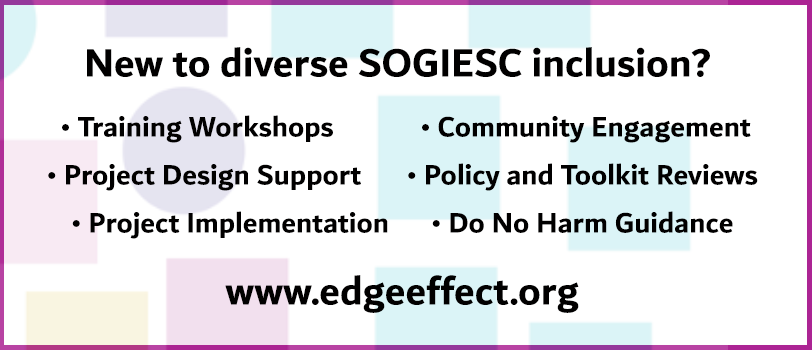Why should people with diverse SOGIESC be part of inclusion efforts in humanitarian (and development) sector programs? A better question is: why would any humanitarian (or development) sector program exclude people with diverse SOGIESC? There is sufficient evidence of the marginalisation of people with diverse SOGIESC in humanitarian and development settings, that diverse SOGIESC inclusion now be a standard component of inclusion across programs.
Two of the four humanitarian principles are directly relevant for justifying diverse SOGIESC inclusion in humanitarian action.
The first principle – humanity – states that “Human suffering must be addressed wherever it is found. The purpose of humanitarian action is to protect life and health and ensure respect for human beings.” It seems odd to have to write this, but that includes people with diverse SOGIESC: Article 1 of the Universal Declaration of Human Rights does not state that “All human beings are born free and equal in dignity and rights, except for people with diverse SOGIESC who are a bit of a problem, and so feel free to ignore them.” If people with diverse SOGIESC are suffering then action is called for; if the life or health of a person with diverse SOGIESC needs protection, then action is called for; and this action must be undertaken in a way that ensures respect for that person.
The third principle – impartiality – states that “Humanitarian action must be carried out on the basis of need alone, giving priority to the most urgent cases of distress and making no distinctions on the basis of nationality, race, gender, religious belief, class or political opinions.” This means that humanitarian actors should take into account the needs of people with diverse SOGIESC, and if those needs are urgent, they should be prioritised. This is not a call for special treatment, and addressing the genuine needs of people with diverse SOGIESC is not an example of making a distinction of the basis of any of characteristics.
So what do we know about the needs of people with diverse SOGIESC in humanitarian settings? Their experiences in humanitarian settings are deeply influenced by the experiences prior to the disaster, conflict, pandemic or other event that causes the humanitarian crisis. Pre-emergency marginalisation for people with diverse SOGIESC can take many forms, including:
- Violence from family members and being cast out of homes.
- Experiencing violence within local communities, exacerbated by perpetrators sense of impunity.
- Being asked to leave local communities or faith communities (or being made so unwelcome that leaving is the only option).
- Being bullied at school (by other students, teachers, or parents) leading to early drop out or lower attainment.
- Experiencing discrimination when seeking employment or on-the-job, or only being offered low-paying work in informal sectors.
- Experiencing discrimination at public service providers like hospitals or offices.
- Experiencing violence or harassment in public places.
- Being targeted by law enforcement for selective enforcement of laws as a form of harassment.
- Living in a country where aspects of your sexual relationship could lead to imprisonment, or where there is no legal process for having your gender recognised.
Factors including these impact people with diverse SOGIESC in different countries, and in different ways. For example, the experiences of a lesbian, a gay man, and a trans woman living in the same city may be quite different, and will also depend on impact of class, ethnicity, disability, and various other factors. However, overall, the UN Human Rights Council recognises that the impact can be systemic and profound:
“The combination of social prejudice and criminalization has the effect of marginalizing lesbian, gay, bisexual, trans and gender non-conforming persons and excluding them from essential services, including health, education, employment, housing and access to justice. The spiral of discrimination, marginalization and exclusion may start within the family, extend to the community and have a life-long effect on socioeconomic inclusion.”
So when a humanitarian crisis happens, people with diverse SOGIESC may be starting from well behind: for stories that demonstrate this, see Down By The River and Pride in the Humanitarian System, or Edge Effect’s Briefing Note on COVID-19.
Violence and discrimination continues during disasters or conflict; and in some cases worsens. For example people with diverse SOGIESC sometimes targeted by armed groups or security officials, or blamed within communities for causing disasters as a form of divine punishment. Even when this does not happen, people with diverse may not access official relief locations or shelters, for fear that they will experience violence or discrimination.
Unfortunately the humanitarian system often does not recognise that these problems are happening or does not have the frameworks, guidance and tools to address these problems. And sometimes the humanitarian system may make things worse. For example, by offering aid on the basis of identity cards, when non-binary people may not have those cards by discriminatory government officials, as happened to Aravani community members in the aftermath of the Indian Ocean tsunami. The effect of this exclusion was to reinforce pre-emergency marginalisation and create a context in which Aravani community members relied upon transactional sex to gain access to humanitarian support. Other examples include defining family or household in ways that exclude diverse SOGIESC families and households, or conducting livelihoods programs where some people of diverse SOGIESC feel they will be unwelcome.
A key problem is that humanitarian assessments do not capture the needs of people with diverse SOGIESC. There are genuine reasons why engagement, collection of data, and analysis of data regarding people with diverse SOGIESC is challenging. Sometime it is genuinely not possible. But often it is possible, but requires intention, creativity, resilience, care and resources. This may include partnership with local diverse SOGIESC civil society organisations (where they exist) or informal networks within diverse SOGIESC communities (where safe to do so). It may involve the use of peer researchers, using storytelling (for example, see Down By The River) or similar qualitative methods. It may require the creation of safer spaces, or dissemination of information about how a person with diverse SOGIESC can safely make their needs known. It may involve a technological solution, where a person can access information over radio, social media or through apps. The solution (including do no harm analysis is – unsurprisingly – likely to be different in different places. But as the sector invests in diverse SOGIESC inclusion, as we learn from experience, as more specific policy and practice guidance is developed, our capacity to meet the needs of people with diverse SOGIESC will grow.
Humanitarian settings are often complicated, messy, busy and under-resourced places, and it would be easy to respond: we don’t disagree with anything you written so far, but we just don’t have time to add this to everything we are trying to do. While that would be an understandable reaction, especially from someone who has just pulled a 12-hour day for the seventh time this week, it is also not good enough. It’s not good enough because this is a systemic problem across the humanitarian system – and so it’s not going to be solved by just adding ‘LGBTIQ+’ to the list of vulnerable groups that already overworked person in Cox’s Bazar is trying to address. It may be solved by an organisational or sectoral commitment to transformation that includes:
- Training for staff and partners.
- Development of diverse SOGIESC inclusive frameworks and tools.
- Support for staff who are unsure how to be inclusive in a particular context.
- Ensuring that diverse SOGIESC CSOs and communities are part of the system.
This will take time, effort and may involve asking difficult questions or owning up to difficult answers. But the Core Humanitarian Standards contain an expectation that agencies will acknowledge challenges and develop “ways to overcome the constraints they come up against”.
If you’re reading this, then you’ve already started this journey.





